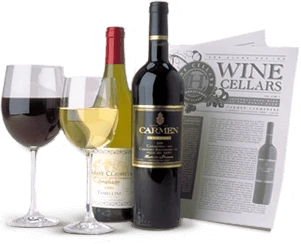The 2014 Château Louvie Saint-Émilion Grand Cru makes a persuasive case for the appellation’s two most prestigious grapes: Merlot and Cabernet Franc. Deep in color and rich in flavor, this juicy, velvety offering exhibits all of the attributes of the very best Saint-Émilion Grand Cru. The youthful, yet already compelling, 2014 Château Louvie combines opulence with palate-pleasing flavors. Beguiling berry, cassis, and woodland scents waft from the glass to make the mouth water. Not surprisingly, these savory scents reappear in the mouth, expand, and cling to the palate in the most delightful way, but what may be most impressive about Château Louvie’s Saint-Émilion Grand Cru is the wine’s velvety texture. It possesses a wonderful mouthfeel. Sensual, yet structured, this smooth, vinous, bold-flavored wine continues to evolve in the glass for hours. It’s hard to ask for more in a young Bordeaux Saint-Émilion Grand Cru. The 2014 Château Louvie offers both fine near term drinking and exceptional potential for ageing gracefully for up to a decade. For optimal enjoyment we suggest decanting the 2014 Château Louvie Saint-Émilion Grand Cru at least an hour before serving at cool room temperature (60°-64° F).
Opulent, hedonistic styled wines such as the 2014 Château Louvie Saint-Émilion Grand Cru provide superb accompaniments to simple, well prepared dishes as well as complex gourmet fare. For this reason, this Saint-Émilion Grand Cru makes an ideal choice to serve any time fine food graces the table. Plump roasted chickens or game hens served with wild rice or an onion and sage stuffing provide tasty companionship. A bone-in veal chop prepared with a tasty brown sauce offers another delicious accompaniment. Prime Rib, served au jus, affords another opportunity to showcase Château Louvie’s wonderful Saint-Émilion Grand Cru. When served with mashed potatoes, fresh green beans, and braised pearl onions, it will be hard to resist either this wine or the Prime Rib. For those stalwart souls disciplined enough to save even a wee bit of Château Louvie’s Saint-Émilion Grand Cru until the end of the meal, we suggest they drain those glasses in the company of a selection of French cheeses that includes Cantal and Port Salut. A votre santé!
Château Louvie is a postage stamp of a vineyard nestled on a tiny plateau and its gentle hillside slopes in the Saint-Émilion district of Saint Laurent des Combes. With ideal exposure and well-drained soil, this diminutive estate, owned by Christian Veyry, produces superlative, highly sought after Saint-Émilion. A winemaker and consultant-oenologist who collaborated with the legendary Bordeaux icon Michel Rolland, Christian now consults for numerous famous châteaux in Bordeaux and Cahors. He is also the owner of Château Veyry in nearby Côtes de Castillon, an ancient wine region that is vying to be Bordeaux’s next star.
Although reluctant to rely on gender stereotyping of grape varietals or their particular characteristics, a compelling case can be made for describing Cabernet Franc as the feminine side of Cabernet Sauvignon. Cabernet Franc, whose origin appears to be the Pyrenees Mountains in southwest France, is one of Bordeaux’s oldest and most prestigious grape varietals. It predates Cabernet Sauvignon by many centuries and recent DNA testing has determined that Cabernet Franc and Sauvignon Blanc constitute the actual forebears of Cabernet Sauvignon and not the other way around.
In its spiritual home of Bordeaux, Cabernet Franc figures prominently in both Left and Right Bank wines, with the most esteemed Right Bank appellations of Pomerol and Saint-Émilion relying more heavily on Cabernet Franc’s propensity to ripen earlier than its more famous offspring, Cabernet Sauvignon. Add Cabernet Franc’s hauntingly beautiful fragrance, enticing berry, currant and leafy flavors, along with rounder, more accessible tannins than Cabernet Sauvignon, and it is easy to see why Cabernet Franc is uniformly esteemed in Bordeaux and increasingly sought after by New World wineries.
Since the last half of the 20th century, Merlot has lived in the shadow of its younger, more robust sibling, Cabernet Sauvignon. Both Merlot and Cabernet Sauvignon are traditional French varietals whose origins are attributed to Bordeaux. However, after the 19th century phylloxera scourge in France, Merlot lost some of its prominence in Bordeaux and elsewhere in favor of the thicker skinned, more age-worthy Cabernet Sauvignon. Merlot came to be viewed as the bridesmaid rather than the bride, and it found itself in a supporting role in many wine regions rather than as the star of the show. This phenomenon occurred in spite of the fact that many of Bordeaux’s greatest red wines have for centuries been produced primarily from Merlot, and they continue to be. The great Château Petrus, which remains Bordeaux’s most expensive wine, and nearly all of the finest wines of Saint-Émilion are based essentially upon Merlot.
However, Bordeaux is not the only wine region today where Merlot thrives. From its native France, Merlot has traveled the world. It is now cultivated on six continents and has over the last three decades become a staple in California, Australia, South Africa, South America, and Tuscany, not to mention its recent proliferation in southern France and throughout Europe. Moreover, Merlot is a very prolific grape variety when left to its own devices. Consequently, nearly everywhere it is cultivated, severe pruning is the key to the quality quotient with this varietal. Merlot suffers from a susceptibility to spring frosts and a very thin skin, too, which leaves it open to rot. Nonetheless, where conditions are warm and dry and the soil is well drained, Merlot thrives. So, no more is the venerable Merlot vine the perennial bridesmaid.

Enjoy Limited Production Estate
Bottled Wines
Discover limited production estate bottled wines such as Vergenoegd's internationally
acclaimed 2005 Cabernet Sauvignon, imported exclusively for our members.

